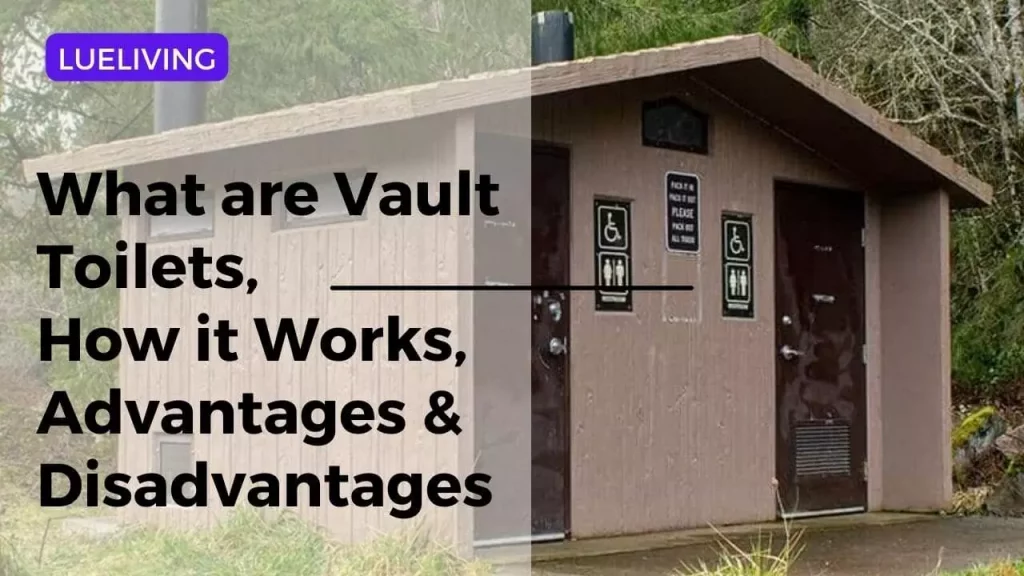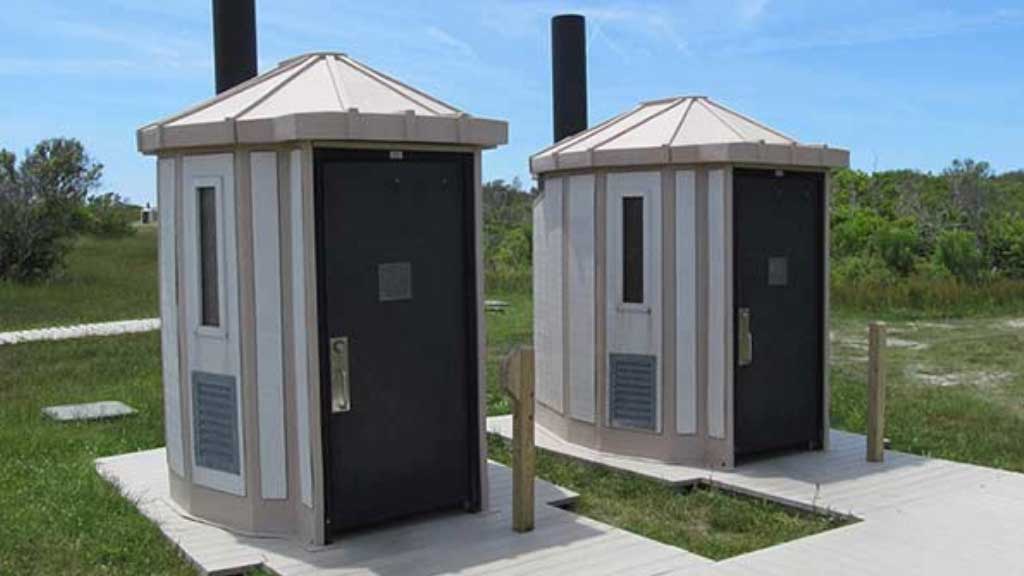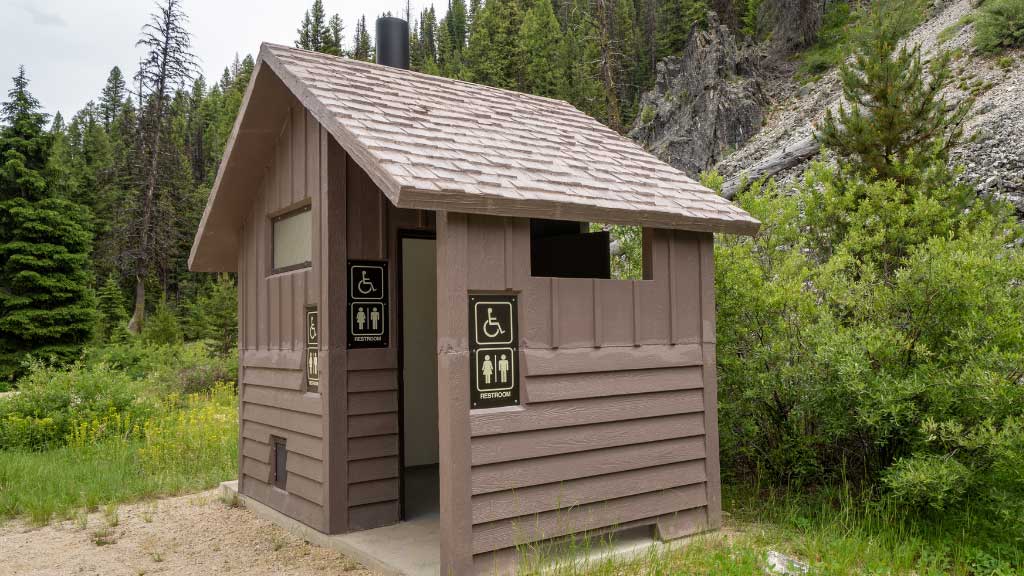
What is a vault toilet camping? Vault toilets are non-flush toilets that store waste in a big airtight subsurface tank without using water (vault). This kind of toilet differs from regular flushing toilets in that it is built in locations where water is scarce, such as leisure and public places, tents, and other shared spaces. Vault toilets are also known as campground toilets since they are commonly found at campgrounds. Water-based toilets also include pit toilets, composted toilets, and sack toilets.
The decline in water costs and contamination are the two main advantages of such toilets. These toilets use the least amount of energy and are excellent compact toilets for small settings. The restrooms are ADA-compliant in terms of toilets and environmental benefits. Unless a strong wind is present, they are odorless. You can literally sit out in it without breathing air.
Vault toilets do not utilize water or cleaning but instead store waste in a big, sealed container beneath the ground. The subsurface container is referred to as the ‘vault’ in the vault toilet. This toilet style is ideally suited to regions with limited access to water, such as shared spaces, campgrounds, playgrounds, and outdoor spaces.
They were developed by the US Forest Service to lessen reliance on standard American toilets and were authorized by the ADA. They’re simple to build and can be fashioned out of cross-linked polyolefin, plastic, concrete structures, or wood frames. In addition, they’ve proven to be extremely robust, with polyethylene being the most frequent material.
Because the components used to make vault toilets generally crack, they pose a low danger of pollution. In addition, the adoption of a more compact vault toilet, such as one made of plastic, makes it lighter and more portable. Composting toilets, pit toilets, and bag toilets are examples of other waterless toilets. You can also read our guide of Pit Toilet vs Vault Toilet here.
How does it work?

The vault, which is buried into the earth, and the upper half, which resembles a booth, are the 2 components of a traditional vault toilet. These toilets are designed for both men and women and can be set up quickly for gatherings or other activities. The underground vault may hold anywhere from 1,000 to 13,000 gallons of water.
The earth is excavated to satisfy the vault’s size and shape when building a vault toilet. The vault is then buried underground, with a slab covering the top to provide support. The toilet is frequently built on a slope to allow for optimum waste flow. A structure is made to the surface during construction to give a link to the vent tube. After that, the upper part is built on a sloped surface.
Also, read Best Tub Surrounds
When the vault gets close to becoming filled, the town council or another service can empty it. Most vault toilets are flushed once a week or every two weeks, based on the size of the vault and the utilization rate.
When it comes to managing toilet odors, there are a few external variables that must be considered. To begin, the vent must be taller than the toilet booth’s roof. Aside from that, the odor must be carried away by the wind; otherwise, it will condense from around the toilet or collect in a nearby building.
The following are some other options for releasing the vault toilets:
- Using a flame to burn the scents from the toilet vapors out of the vent.
- Long subterranean pipes can transport trash to locations distant from the toilet. This is usually utilized for vault toilets that are built to last.
- With the introduction of an organic filler to the trash, the smell in the odour, made up of carbon dioxide and hydrogen sulfide, can be transformed into odorless nitrogen gas.
- To reduce the stink from the toilet vapors, activated carbon can be applied to the excrement.
The accessibility of heat on the exhaust at the toilet’s ceiling is another key factor in minimizing the odor from a vault toilet. The sunlight is usually sufficient for this cause. When the head of the valve is heated, the unpleasant smell is swiftly forced out. Due to the fact that hot air is lighter than cold air, heated air rises swiftly and away from people. You may have observed that sewer gases are more noticeable on chilly days than on warmer days.
Advantages of Using a Vault Toilet
They are highly cost-effective because they do not require running water to function. In fact, this feature is the primary reason they are preferred over flushing toilets in most countries. In addition, because vault toilets are solitary units, they can only be used by one person at a time. As a result, they offer the customer an outstanding level of privacy. They’re also big enough for changing clothes or something else you can’t do in public.
A vault toilet can be found almost anywhere, whether in a park or on occasion. This removes the need to find a restroom away from your workplace or function. You can add a variety of advanced features to vault toilets that they don’t generally come with. To heavy particles, install lighting and sanitizing equipment to these toilets.
The resources and skills required to build a vault toilet are relatively common. Thus it will cost significantly less and take much less time to make. In terms of upkeep, all you have to do is wash it on a daily basis and drain the garbage on a regular basis.
Vault toilets made of plastic may be reused multiple times by merely cleaning them and transferring them to other sites. In addition, because of their portability, they may be used at events and in public places.
Disadvantages of Using a Vault Toilet
The atmospheric process will be ineffective if the exhaust lacks heat at the top. Cloudy weather, rain, crowds, or perhaps even shade from trees and branches can all contribute to this. There have been instances where the vault toilets’ ventilation has failed. However, this is unusual. The air from around the toilet will be saturated with a foul odor in this situation.
Because vault toilets do not use water to flush, they must be cleaned on a regular basis. This can be challenging because most parks and other sites where portable toilets are utilized lack the necessary volume of water. However, this amount of water is less than will be used to clean the toilet.
Also read How to flush a toilet without water
Although vault toilets are compact units, it can be difficult to manage waste because they quickly fill up, especially in crowded areas. They can also become clogged, making it difficult to drain them without dismantling them. This can be very expensive. In addition, the waste might be exposed by the elevation at times, making them rather unattractive.
While vault toilets are renowned for their versatility, plastic toilets are the most portable because they can be simply disinfected and moved to another area. Unfortunately, other varieties aren’t as adaptable.
How to Get Ready to Use Vault Toilets

If you’re traveling and need to use a vault toilet, keep the following points in mind:
Vault toilets are frequented by bees, spiders, and, most notably, flies. However, this is a rare occurrence, with only a few flies present. In addition, flies and most insects are unusual to locate around specific toilets since they are kept clean.
Vault toilets are designed solely for sewage. As a result, people who drop solid materials into the vault, such as tampons, diapers, and wet wipes, might clog the toilet, requiring it to be broken down. Worse, it will render the toilet inoperable, forcing you and other users to look for a different toilet.
But if you have a car nearby or a friend who can look after your stuff while you attend to other matters in the vault toilet, you should not enter the vault toilet with your valuable backpack. It’ll be snatched if you don’t. So before entering the toilet vault, lock the car as well.
Toilet paper is available in the vault toilets at most camps and events. However, due to the large number of individuals who use these restrooms, toilet paper runs out quickly. As a result, you could feel humiliated if you go to the bathroom and can not see the toilet paper. As a result, take some to a vault toilet.
While you might receive a vault toilet for washing hands or a sterilization booth if you’re lucky, others may not. So instead, carry a hand sanitizer with you to wipe your hands after using the restroom.
Vault Toilet Care
Like any other kind of toilet, vault toilets are susceptible to bacterial and bacterial infection organisms. If it is not frequently cleaned and emptied, it can become a potential site for microorganisms to multiply and create germs. Cleaning your vault toilet regularly is the first step in keeping it in good shape. You can also sanitize the region after using septic treatment solutions like RTB 760.
Conclusion
Even though most people confuse vault toilets for outhouses, the latter is more hygienic. Vault toilets are cost-effective and are an excellent solution for individuals looking for waterless toilets because of their design. In addition, vault toilets are deemed healthy to use since they follow ADA guidelines.
They are long-lasting, simple to operate, and have a well-designed ventilation system. If necessary, you will have no remorse putting this system in your home as long as it is sterilized and the tank is emptied on a regular basis.
Related:
Hi, I’m Jana, author and interior design enthusiast. I understand that turning a house into a space that reflects you is no small feat. However, if you have the right information to start with, you can make the process much easier and simpler. That’s why I like putting together handy guides and articles on home design and decor subjects, that you might not have known you needed to learn about until you have to choose them for your home. If you want to learn about products on the living space design market in order to choose what befits your home, this is the right place for you.
